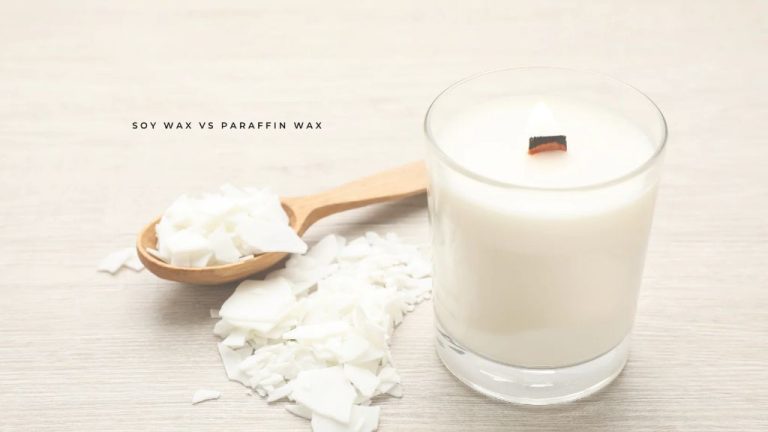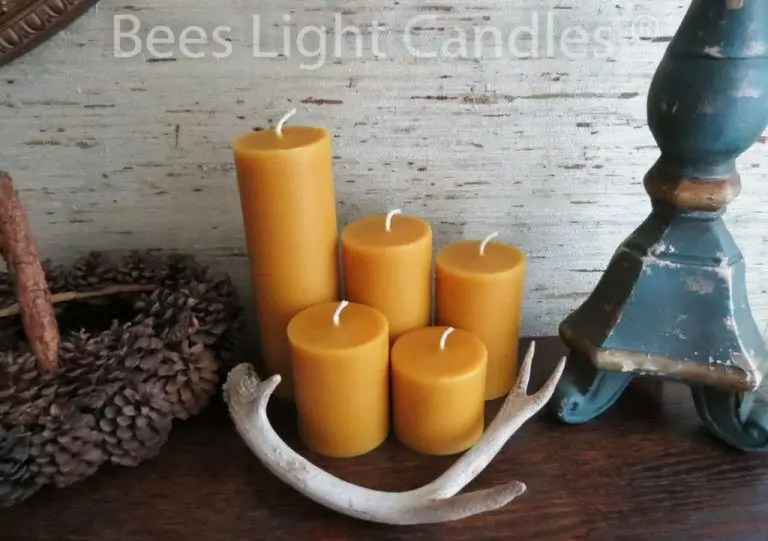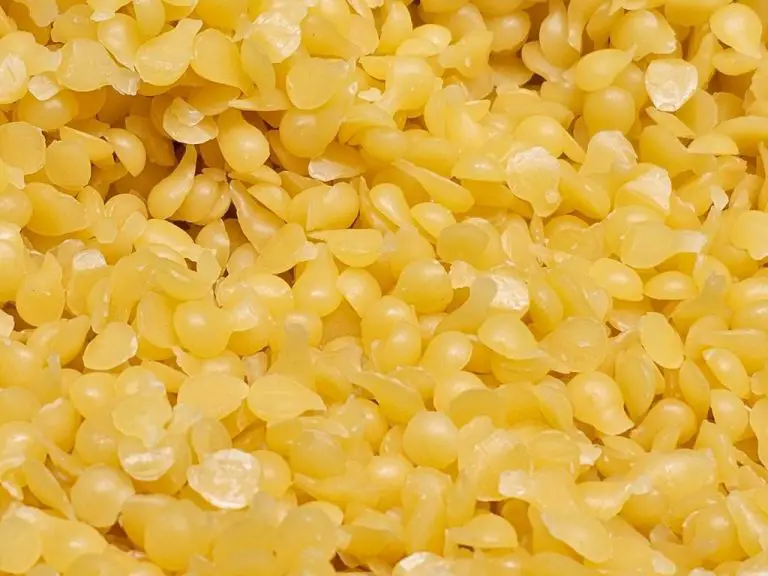What Is A Cocoa Wax?
What is Cocoa Wax?
Cocoa wax is a vegetable-based wax made from hydrogenated or refined cocoa butter, which comes from roasted cocoa beans. Unlike traditional candle waxes like paraffin, soy wax and beeswax, cocoa wax consists primarily of natural cocoa butter rather than petroleum, soy or beeswax.
Cocoa beans contain 50-55% cocoa butter naturally. This cocoa butter is extracted from the beans and hydrogenated, a process which makes the cocoa butter denser and alters its melting point. The resulting solid product is what is known as cocoa wax.
Cocoa wax is hard, brittle and powdery at room temperature. It has a high melting point between 97-102°F (36-39°C), making it an ideal wax for candles and other cosmetic products. Its hardness helps achieve a smooth, even melt pool without creating excess wax drippings when burned. Cocoa wax also emulsifies well with other waxes and oils.
How is Cocoa Wax Made?
Cocoa wax is extracted from the cocoa bean, which is the dried and fully fermented seed of the cacao tree. To produce cocoa wax, the cocoa beans first go through an extraction process.
The beans are cleaned, roasted, and shelled. The shells are removed, leaving just the cocoa nibs. The nibs contain both cocoa solids and cocoa butter (the natural fat component). To separate the fat from the solids, the nibs undergo a pressing process called hydraulic racking. This high pressure system squeezes the cocoa butter out from the solids.
Once extracted, the crude cocoa butter then goes through a refining, filtering, and deodorizing process. The butter is washed, filtered, and polished to remove any remaining cocoa solids, odors, or discolorations. It may be gently heated and stirred to keep the fat fluid. The refined butter is then cooled and left to crystallize into a solid state, resulting in a pure, odorless and white-colored cocoa wax ready for use in products.
Benefits of Cocoa Wax
Cocoa wax offers several benefits that make it a valued ingredient in skin care, cosmetics, and candle making. Some of the key benefits include:
Natural Moisturizing Properties
The fatty acids and nutrients in cocoa wax give it excellent moisturizing properties. When applied to skin, it forms a protective barrier that locks in moisture. This makes cocoa wax well-suited for products like body butters, lotions, lip balms, and more. It helps keep skin hydrated and supple.
Gentle for Sensitive Skin
Cocoa wax is hypoallergenic and unlikely to cause irritation, even for those with sensitive skin. Its soothing, emollient properties make it a popular choice for products aimed at babies and those with skin conditions like eczema or psoriasis.
Rich in Antioxidants
Cocoa wax contains compounds like polyphenols that have antioxidant effects. When applied topically, these antioxidants can help protect skin from environmental damage. They may also provide anti-aging benefits by neutralizing free radicals that can accelerate signs of aging.
Use in Candle Making
Cocoa wax is commonly used to make candles because of its hardness and ability to hold fragrance. The natural hardness of cocoa wax allows it to hold its shape better than softer waxes like soy or beeswax. This makes it an ideal wax for detailed candle molds and forms. The hardness also helps the wax burn slower and more evenly than softer waxes, improving burn time.
In addition, cocoa wax contains natural chocolate aromas that provide candles with a pleasant, subtle scent even before fragrance oils are added. The wax holds and disperses fragrance oils better than many other waxes, allowing candle makers to use less fragrance while still achieving a strong scent throw. The natural scent works well with common candle fragrances like vanilla, coffee, and chocolate.
Cocoa wax is often blended with other waxes like paraffin or soy wax when making candles. The mixtures allow candle makers to balance qualities like melt point, hardness, scent throw, and cost. Adding just 10-15% cocoa wax to another wax can help harden the candle while retaining the primary wax’s desirable attributes. The natural cocoa fragrance also enhances the scents of other waxes. The flexibility to blend cocoa wax makes it a versatile, high-performance option for candle making.
Use in Skin Care
Cocoa wax is highly regarded in natural skin care products due to its beneficial properties for the skin. It has excellent emollient properties and can help improve skin hydration, making cocoa wax well suited for moisturizing creams and lotions. The wax absorbs readily into the skin without leaving an oily residue. This allows the skin to fully benefit from cocoa butter’s nourishing fatty acids and antioxidants.
The rich antioxidant content of cocoa wax, such as polyphenols and vitamin E, can help reduce skin inflammation and provide anti-aging effects. By combating oxidative stress and damage from free radicals, cocoa wax may be able to slow down the appearance of fine lines, wrinkles, and other signs of aging. It promotes skin elasticity and smoothness for a more youthful complexion.
Overall, cocoa wax is prized in natural skin care for its excellent moisturizing abilities and anti-aging benefits. It can deeply hydrate the skin while protecting against environmental stressors.
Use in Cosmetics
Cocoa wax is valued in cosmetics for its emollient properties. The natural oils in cocoa wax allow it to moisturize and soften skin. This makes it an excellent addition to lip balms, lotions, creams, and other beauty products.
The wax also provides beneficial texture and consistency. Cosmetic makers use cocoa wax to thicken formulas and improve spreadability. A small amount of cocoa wax can transform the texture of a product into something lush, smooth, and luxurious.
Cocoa wax is commonly found in natural makeup. It gives color products like blush, eyeshadow, and lipstick their signature creamy, blendable texture. The wax also helps makeup adhere to the skin and provides color payoff. Overall, cocoa wax improves the application and wear of makeup.
Sustainability of Cocoa Wax
Cocoa wax is considered a very sustainable wax option for several reasons. Here are some of the main advantages of cocoa wax when it comes to sustainability:
Biodegradable and Eco-Friendly
Cocoa wax is biodegradable, meaning it will break down naturally in the environment over time without causing harm. This makes it much more eco-friendly than paraffin wax, which is made from petroleum and does not biodegrade. Cocoa wax comes from a renewable resource – the cocoa bean – so it is also considered a more sustainable choice than paraffin or other petroleum-based waxes.
Ethical Sourcing Concerns
There can be ethical concerns around how cocoa beans are sourced, as some cocoa production relies on child labor or unfair wages for farmers. When purchasing cocoa wax, it’s important to look for ethical and fair trade certification to ensure fair labor practices. Reputable suppliers will source their cocoa beans sustainably and transparently.
Reusable in Skin/Hair Care
Cocoa wax can be composted or reused in skin and hair care recipes. Any leftover wax can be remelted and added to body butters, lotions, creams, or hair products. This gives the wax extended usefulness beyond just candle making.
Cost and Availability of Cocoa Wax
Cocoa wax tends to be more expensive than some other wax options like paraffin or soy. However, it provides superior performance that can make it worthwhile for many applications. Expect to pay $1-3 per pound for high quality, food grade cocoa wax.
You may be able to find cheaper cocoa wax from hobby stores or online retailers, but the quality is often inferior. For the best results, purchase cocoa wax from reputable suppliers that focus on candle making, cosmetics, or chocolatiers. These suppliers carefully source and process the cocoa beans to maximize the wax quality.
Some reputable places to buy cocoa wax include:
- CandleScience
- Lone Star Candle Supply
- Bramble Berry
- Specialty Bottle
When buying cocoa wax, look for organic, fair trade options to support sustainable production. Also check for independent certification like GOTS to ensure purity and quality standards. Buying in bulk can help lower the price per pound if you plan to use a lot of cocoa wax.
Storage and Shelf Life
Cocoa wax is quite shelf stable compared to other waxes, but it still requires proper storage for maximum freshness and longevity. Ideal storage conditions for cocoa wax include:
- Store in an airtight container to prevent moisture absorption and oxidation.
- Keep away from direct sunlight and heat sources.
- Store in a cool, dark place such as a pantry or cupboard.
- Ideal storage temperature is between 60-75°F.
With proper storage, cocoa wax can last 12-24 months before starting to lose freshness and quality. You’ll know the wax is past its prime if the color darkens or it develops an unpleasant odor. For best results, try to use cocoa wax within a year of purchase.
Properly stored cocoa wax maintains its beneficial properties like creaminess and viscosity. Following the above storage guidelines helps prolong shelf life so you can enjoy cocoa wax’s smooth texture and performance.
Fun Facts About Cocoa Wax
Cocoa wax has been used for thousands of years, dating back to Ancient Egypt where it was combined with beeswax to create embalming oils. The unique chemical composition of cocoa wax gives it properties not found in other waxes.
Here are some interesting facts about cocoa wax:
- Cocoa wax melts at a lower temperature than beeswax, making it easier to work with.
- It has a lovely chocolate aroma when melted due to the natural cocoa butter present.
- Cocoa wax is edible! Food-grade cocoa waxes are sometimes used to coat chocolate candies.
- In its pure form, cocoa wax is ivory or yellowish in color. Dyes are added to produce colored cocoa waxes.
- It’s naturally hard but becomes pliable when mixed with oils, making it perfect for balms and salves.
- Cocoa wax was used by the ancient Mayans to waterproof surfaces and preserve artwork.
With its warm, chocolatey scent and flexibility, it’s no wonder cocoa wax has been prized for millennia! It continues to be a popular natural wax for candles, skin care, and more.




